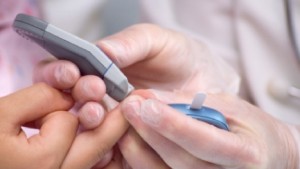
Firstly, your blood is drawn for the Fasting Plasma Glucose Test after you have not eaten for about eight hours. This tends to be done in the morning before breakfast, and can test for diabetes and prediabetes, which is a condition in which your wellness is still at risk due to high glucose levels, but they’re not quite at a diabetes diagnosis level. Normal blood sugar is below 100 milligrams per decilitre (mg/dL), diabetes is diagnosed if blood sugar is 126 mg/dL or higher and anything between that is prediabetes or impaired fasting glucose.
The second test is an Oral Glucose Tolerance Test, and is also done after you have not eaten for about eight hours. After taking a sample of your blood, the technician will give you a prepared sugary drink containing 75 mg of glucose. He or she will take your blood again two hours after you’ve drunk it, to measure how your insulin responded to that drink. If your blood sugar is 139 mg/dL or below two hours after testing, this is normal, anything from there up to 199 mg/dL indicates prediabetes and diabetes could result if your levels are 200 or above, though your doctor will want a retest to confirm this result.
The final test that is currently used to determine type 2 diabetes is the Random Plasma Glucose Test, which unlike the others may be done at any time to measure your blood sugar levels. Though it isn’t accurate enough to diagnose prediabetes, you can still be diagnosed with diabetes if your blood sugar is at least 200 mg/dL amongst other symptoms such as increased levels of urination, drinking and weight loss without meaning to lose weight. Again, your doctor may want to test again to confirm, but the only way to know for sure if you have prediabetes or diabetes is to get a blood test, as you cannot feel your blood sugar levels rise.
